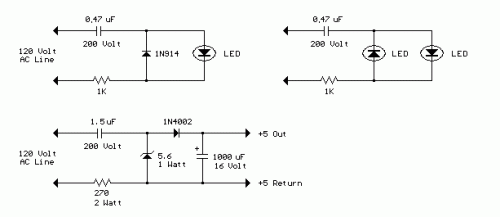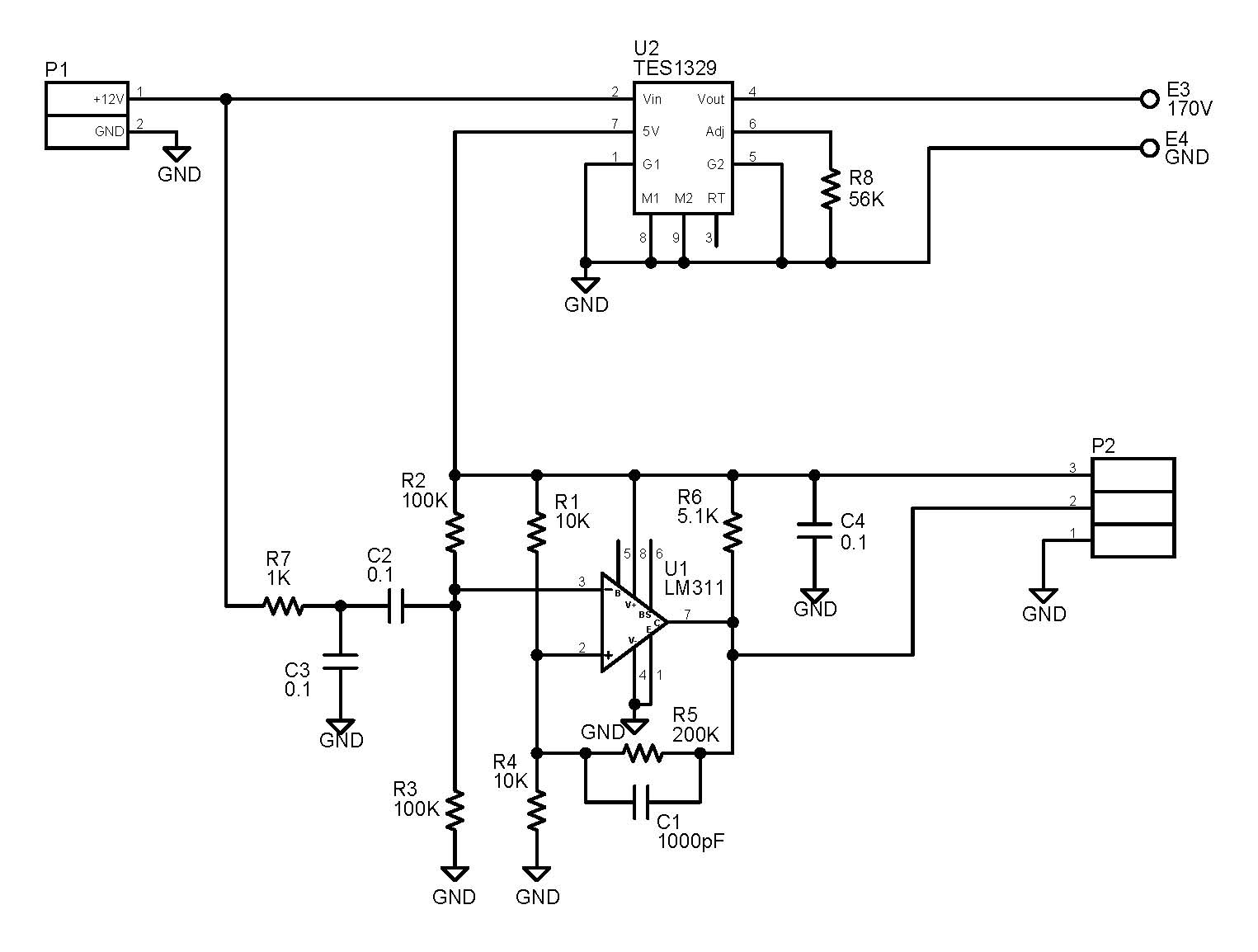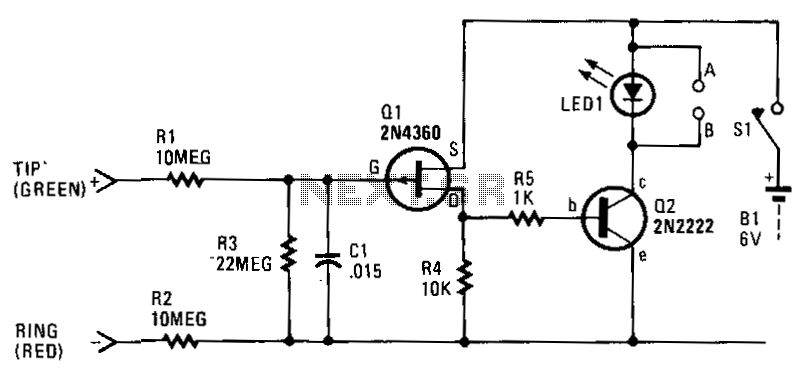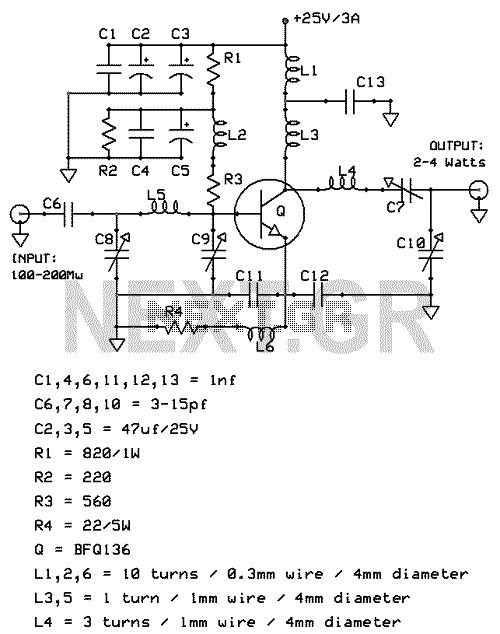
AC Line powered LEDs

The circuit below demonstrates how to power one or two LEDs from a 120-volt AC line. It utilizes a capacitor to reduce the voltage and a small resistor to limit the inrush current. As the capacitor needs to allow current to flow in both directions, a small diode is connected in parallel with the LED to create a path for the negative half cycle and to restrict the reverse voltage across the LED. Alternatively, a second LED with reversed polarity may be used in place of the diode, or a tri-color LED could be implemented.
The circuit operates by connecting the AC line voltage through a capacitor, which serves to drop the voltage to a level suitable for the LEDs. The capacitor is chosen based on its capacitance value, which determines the amount of current that can flow through it at the operating frequency of the AC supply (60 Hz in North America). The value of the capacitor is crucial as it directly affects the brightness of the LEDs; a larger capacitance will allow more current to flow, resulting in brighter illumination.
A resistor is included in series with the LEDs to limit the inrush current when the circuit is first powered. This is important to prevent damage to the LEDs, which can occur if excessive current flows through them. The resistor value is selected based on the forward voltage drop of the LEDs and the desired current through them, following Ohm's law (V = IR).
To manage the AC waveform, a diode is placed in parallel with the LED. This diode conducts during the negative half cycle of the AC waveform, allowing current to flow through the LED in both directions. The diode also serves to protect the LED from reverse voltage, which can cause it to fail. In scenarios where a second LED is used with reversed polarity, it will light up during the negative half cycle, providing a similar effect.
Incorporating a tri-color LED can enhance the functionality of the circuit by allowing for different colors to be displayed based on the polarity of the applied voltage. This can create visual effects that are appealing for decorative lighting applications.
Overall, this circuit design is a practical solution for directly powering LEDs from an AC source while ensuring their longevity and functionality through proper current limiting and reverse voltage protection.The circuit below illustrates powering a LED (or two) from the 120 volt AC line using a capacitor to drop the voltage and a small resistor to limit the inrush current. Since the capacitor must pass current in both directions, a small diode is connected in parallel with the LED to provide a path for the negative half cycle and also to limit the reverse voltage across the LED.
A second LED with the polarity reversed may be subsituted for the diode, or a tri-color LED could be used which would appe. 🔗 External reference
The circuit operates by connecting the AC line voltage through a capacitor, which serves to drop the voltage to a level suitable for the LEDs. The capacitor is chosen based on its capacitance value, which determines the amount of current that can flow through it at the operating frequency of the AC supply (60 Hz in North America). The value of the capacitor is crucial as it directly affects the brightness of the LEDs; a larger capacitance will allow more current to flow, resulting in brighter illumination.
A resistor is included in series with the LEDs to limit the inrush current when the circuit is first powered. This is important to prevent damage to the LEDs, which can occur if excessive current flows through them. The resistor value is selected based on the forward voltage drop of the LEDs and the desired current through them, following Ohm's law (V = IR).
To manage the AC waveform, a diode is placed in parallel with the LED. This diode conducts during the negative half cycle of the AC waveform, allowing current to flow through the LED in both directions. The diode also serves to protect the LED from reverse voltage, which can cause it to fail. In scenarios where a second LED is used with reversed polarity, it will light up during the negative half cycle, providing a similar effect.
Incorporating a tri-color LED can enhance the functionality of the circuit by allowing for different colors to be displayed based on the polarity of the applied voltage. This can create visual effects that are appealing for decorative lighting applications.
Overall, this circuit design is a practical solution for directly powering LEDs from an AC source while ensuring their longevity and functionality through proper current limiting and reverse voltage protection.The circuit below illustrates powering a LED (or two) from the 120 volt AC line using a capacitor to drop the voltage and a small resistor to limit the inrush current. Since the capacitor must pass current in both directions, a small diode is connected in parallel with the LED to provide a path for the negative half cycle and also to limit the reverse voltage across the LED.
A second LED with the polarity reversed may be subsituted for the diode, or a tri-color LED could be used which would appe. 🔗 External reference





